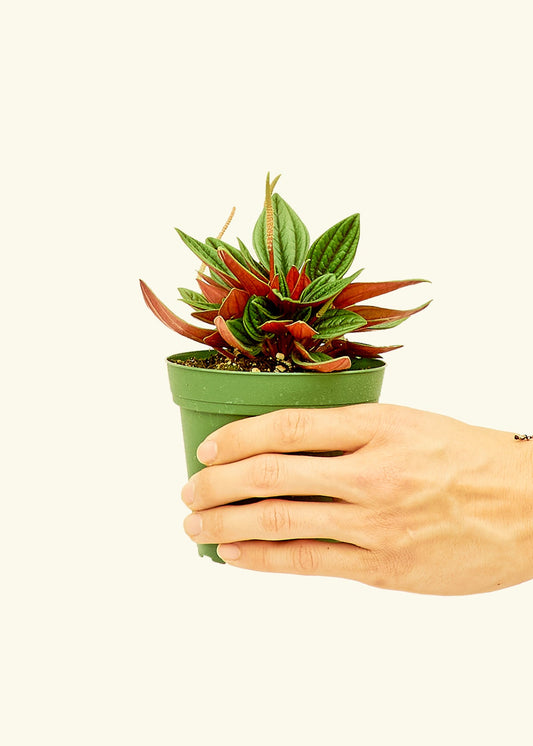Peperomia: Overview
Add effortless greenery and a touch of creativity to your home or office with charming Peperomia plants. Most Peperomia types stay compact and are super easy to care for.
Peperomias are native to Brazil, Peru, and other tropical areas of South and Central America. They are part of the pepper family, best suited to hardiness zones 10-12. There are over 1,000 Peperomia types, with delightful and highly versatile foliage. Moreover, these cute tropical gems are safe for pets.
Whether you’re looking for a neat, small plant with glossy foliage, like the Baby Rubber Plant, or a lush hanging plant, like Peperomia 'Hope', you’ll find what you need among our Peperomia varieties. These beautiful little plants symbolize good luck and happiness, making them a wonderful choice for gifts.
Peperomia Plant Benefits
- Lovely ornamental foliage
- Pet-friendly plant
- Ideal plant for desks, small shelves, and other compact spaces
- Has strong air-purifying properties
- Perfect for beginners
Peperomia Care: Growing Guide
Caring for Peperomia is easy. Follow these simple Peperomia plant care tips to help your plants stay lush and bushy:
Watering, Light, Humidity, and Temperature
Many people wonder if Peperomia is a succulent. Yes, it’s semi-succulent, which means that it stores water in its stems and leaves. Peperomias have low watering requirements, so be careful not to overwater them. Water once you receive your Peperomia plant for sale, then wait for the soil to dry out before watering.
These graceful plants grow best in indirect medium to bright light. They’ll appreciate a spot on an east-facing windowsill. Outdoors, keep your Peperomia in partial or full shade to prevent its leaves from getting sunburned.
Peperomias are tropical plants that appreciate warmth and some additional humidity. Use a humidifier, mist your plant regularly, or place it on a pebble tray. This plant is perfect for humid environments, like bathrooms or kitchens. A comfortable temperature of 60°F-75°F is perfect for your Peperomia. Avoid placing your plant in cold drafts from doors, windows, or ventilators.
Repotting, Soil, and Feeding
Peperomias are slow-growing houseplants, so you’ll only need to repot your plant once every two years into a slightly larger pot. Peperomias need rich but well-draining soil. Mix the potting soil with perlite, coco coir, or peat moss to provide good soil aeration.
Peperomias are small plants and need to be fertilized sparingly, as excess fertilizer can burn the roots. A balanced liquid fertilizer diluted at half strength, given once every season, except winter, will keep your Peperomia nourished and happy.
Propagation
It’s easy to propagate your Peperomia plant. Take a stem cutting and place it in water. Change the water regularly until the roots grow, then plant in the soil.
Pruning, Cleaning, and Common Issues
Prune your Peperomia’s stems above a leaf node to promote branching. That’s the perfect way to make your plant bushier and keep it in shape. Clean off the dust by washing your Peperomia under a shower or wiping the leaves with a soft cloth.
Overwatering is the biggest problem Peperomia plants face; watch out for yellowing lower leaves and check the soil before watering. Dry and crispy leaves show that your plant is thirsty. A lack of sunlight will often prevent your Peperomia from growing new leaves.
Explore Different Types of Peperomia Varieties
Peperomia’s versatility and remarkable foliage make it one of the favorite houseplants for those who appreciate compact, easy-going plants. They’re cute and will tolerate an occasional missed watering or varying light conditions. Explore some beautiful Peperomia varieties at Hey Rooted!
Watermelon Peperomia
Description: The leaves of the delightful Watermelon Peperomia (Peperomia argyreia) look like little watermelons, lending this low-maintenance plant plenty of charm.
Peperomia Rosso
Description: Peperomia 'Rosso' (Peperomia caperata 'rosso') has gorgeous, grooved leaves with a bright red underside; this striking Peperomia will bloom with graceful, creamy white flower spikes.
Variegated Baby Rubber Plant
Description: The appeal of the Variegated Baby Rubber Plant (Peperomia obtusifolia variegata) lies in its calming light green foliage streaked with creamy yellow and minimal care requirements.
String of Turtles
Description: With miniature leaves that resemble turtle shells, the String of Turtles (Peperomia prostrata) is a unique plant with beautiful cascading stems.
Shop for Peperomia for Sale at Hey Rooted Now!

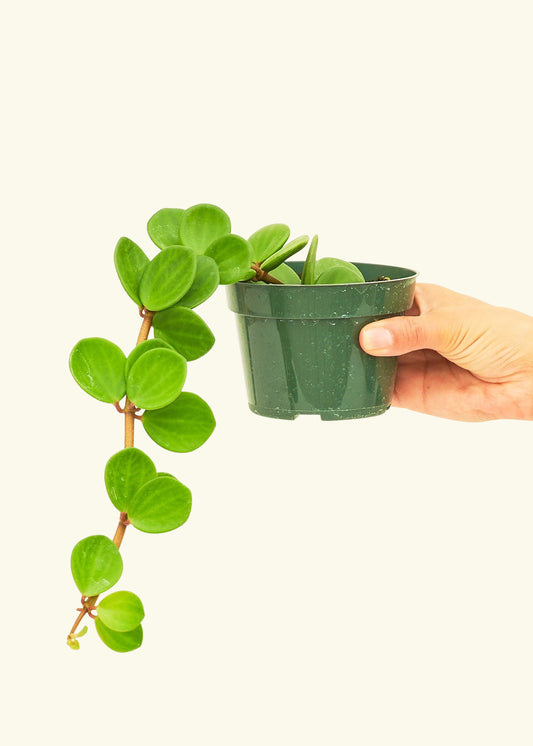 Sold out
Sold out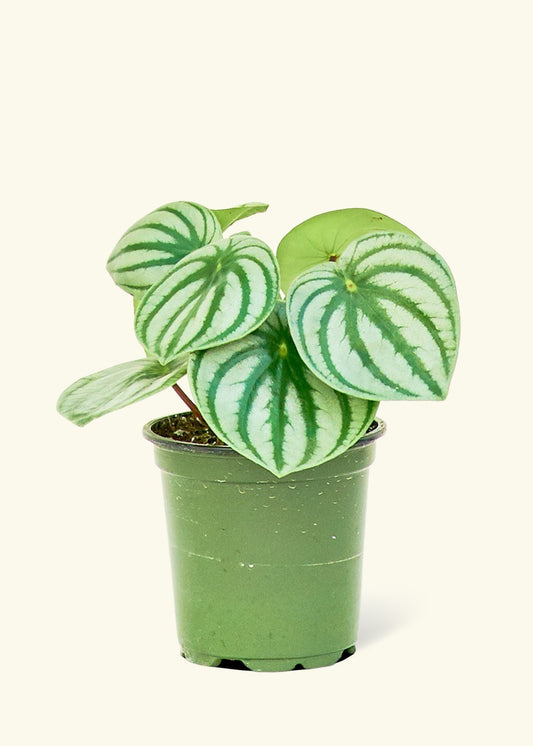
 Sold out
Sold out
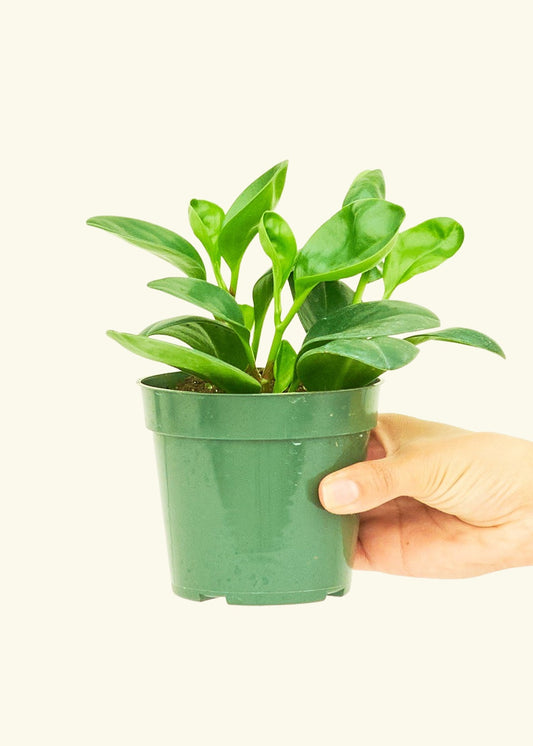 Sold out
Sold out
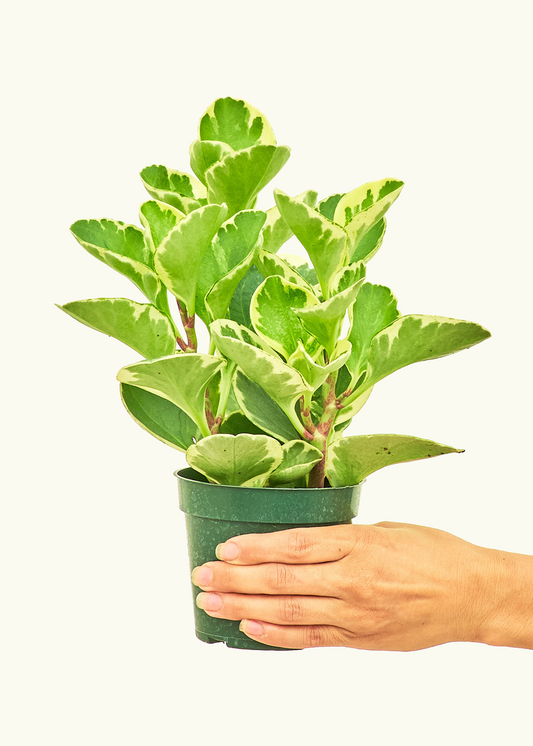 Save $2.50
Save $2.50
 Sold out
Sold out
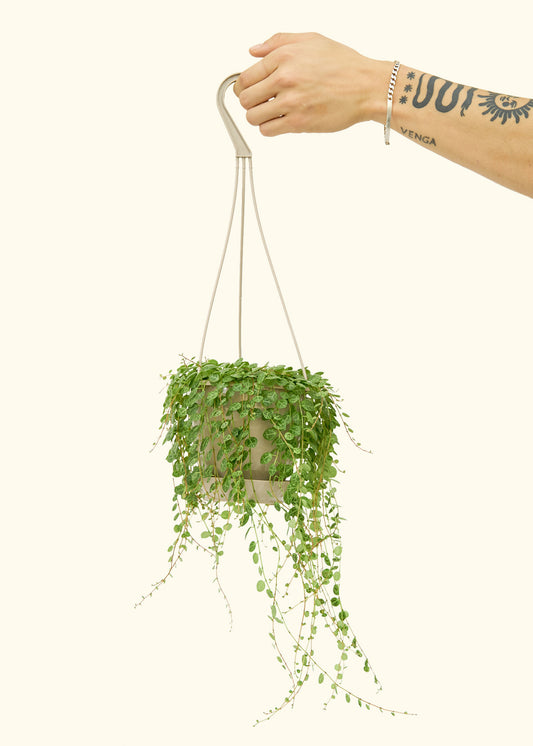 Sold out
Sold out





